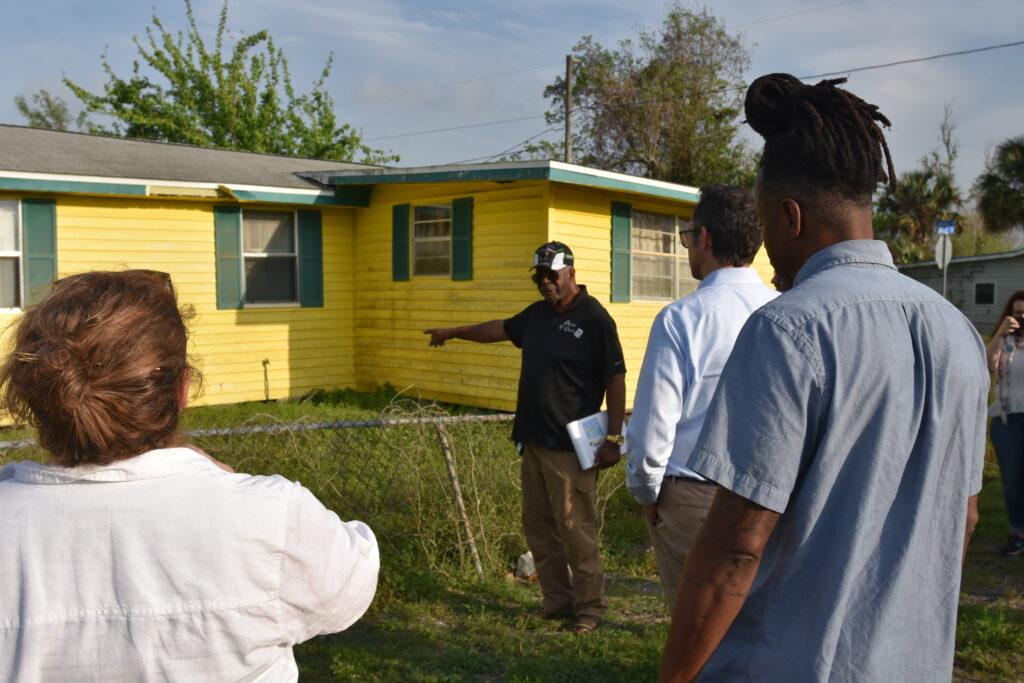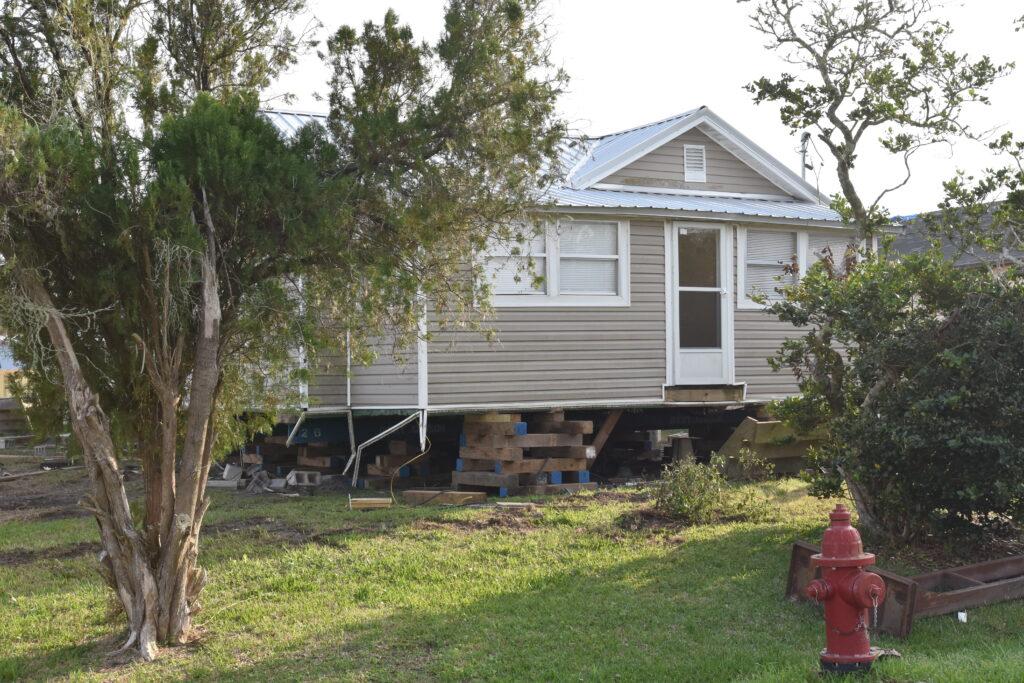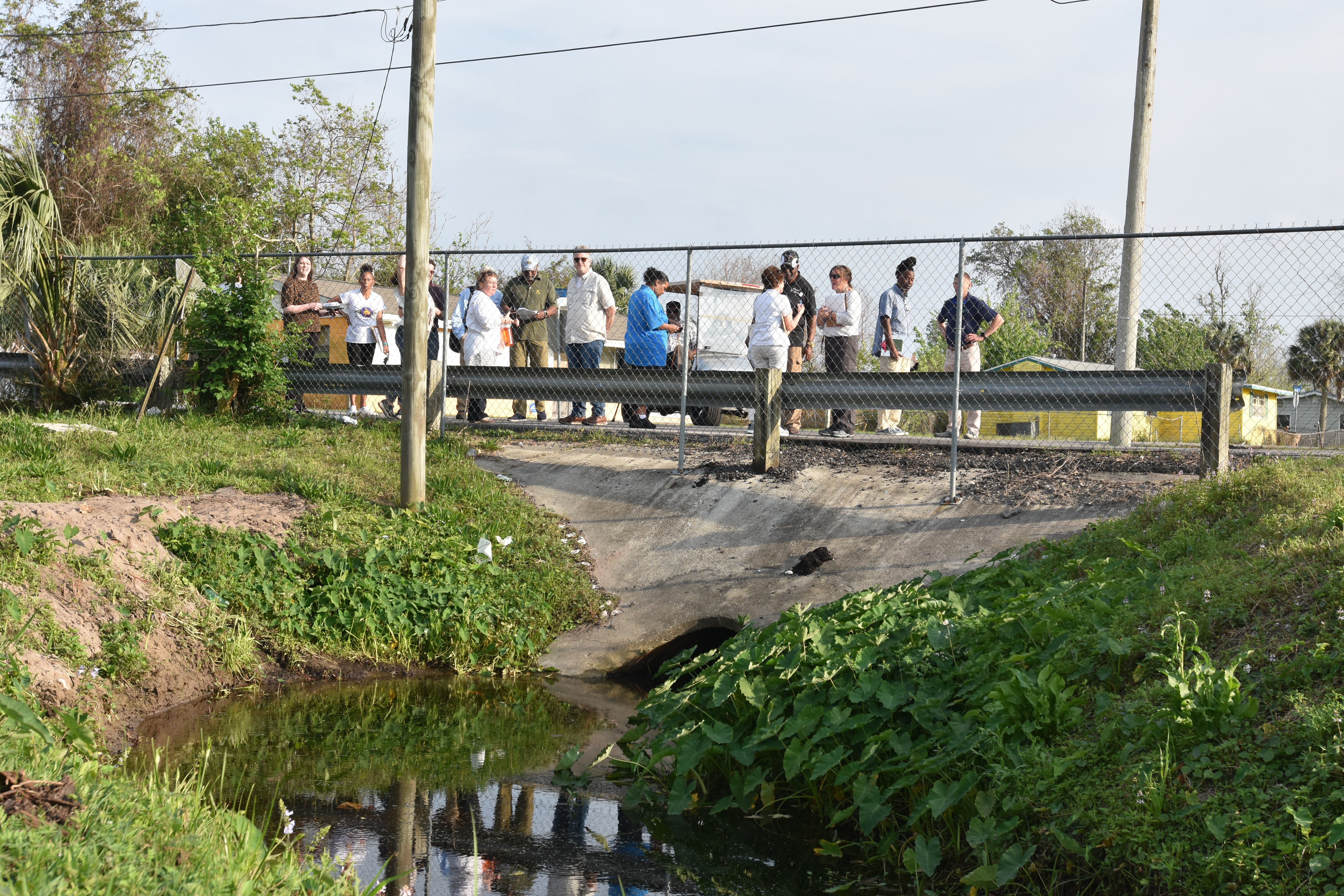Researchers tour North Port St. Joe for solutions to ongoing flooding, sinking properties
About three steps from the concrete driveway of the house off Battles Street your heels start to sink in the soft earth.
Two steps further, and the yard feels something akin to a sponge, compressing under the weight of anything placed on it, including the home, which after years on the site, has sunken feet into the ground.
“They tested how deep this was right here with the EPA job training class,” said George Foxworth, who grew up on the property. “It’s 27 inches until you reach the water table right here.”
It hasn’t always been this way, Foxworth said. When his family first moved in in the 1960s and 70s, the home had been a stable, steady household, and it sat at street level.
But as the ground, hastily filled in decades prior, began to rot out from underneath them, twisting the house’s foundation and causing it to sink in the process, living on the property became more and more difficult.
“If you look at the roof line, you can tell where it’s sinking at. Several times, my mother has tried to jack it up, but you see how it is now,” said Foxworth, looking over the property.
“If you look at this side over here, you can see depressions where the land has sunk. It’s even worse around the rear… Over the years, the soil has given away, and this is what we’ve been left here with.”

In 2020, Foxworth and his siblings decided the home was no longer safe enough for their mother to live there.
But as they packed her up, moving her into a nearby apartment complex, Foxworth made her a promise.
“She is 86 years old, and I hear from her every day ‘when am I going to move back to my home?’” he said. “This is the home that she raised her four children in… This is where she wants to be.”
The Battles Street home is one of more than a dozen in the North Port St. Joe neighborhood succumbed to what locals and experts refer to as an underground stream, generated decades prior when a natural stream was filled in by the St. Joe Company.
“I moved to this home when I was approximately seven years old,” said Foxworth. “From what my mother and father tell me, this area was swamp (before that). The St. Joe Company allowed them so many loads of dirt to sort of fill in what they could.”
In the years following the opening of the St. Joe Paper Company Paper Mill adjacent to the North Port St. Joe neighborhood, the St. Joe Company dumped various paper mill waste products, such as wood chips, tree bark, lime grits, oil boiler ash and slag, collectively called “the sock” onto locations throughout the area.
This swampland was filled in, and the properties were eventually sold to numerous individuals and contractors.
Some of this “sock” was used to fill in a naturally occurring waterway that ran along the land where Battles Street currently sits.
In the early 2000s, following a study by the Florida Department of Environmental Protection showing widespread soil and groundwater contamination in the area, several residents of the North Port St. Joe neighborhood filed suit against the St. Joe Company, with appeals ultimately being denied hearing by the Florida Supreme Court.

Many residents accepted a settlement offer from the company. But the settlement did not help to correct the problems themselves, said Dannie Bolden, a member of the North Port St. Joe Project Area Coalition, an organization working towards the neighborhood’s redevelopment.
Homeowners in the area, along with sinking foundations, are also facing ongoing flooding and stormwater issues.
On March 10, as Foxworth allowed researchers from the University of Florida to tour his mother’s property, he pointed out the spots where stormwater pooled, even in a light rain.
Down the street, his neighbors have to sweep water out their back door any time there’s more than a light rain.
The researchers were there to assess the potential to introduce nature-based solutions, such as rain barrels, stormwater parks and retention gardens, to address these ongoing problems.
“The University of Florida has been working with organizations in the North Port St. Joe community to address a number of problems the community is currently facing,” said Bolden. “There was a grant that was available through the Academy of Sciences for nature-based solutions, and so the university, my folks, and Dr. James Carney decided this was a great opportunity to look at addressing some of the groundwater and stormwater issues we’re having in the community.”
Bolden said the grant will cover the first part of the researchers’ process, allowing them to assess the situation, gather community input and formulate a plan.
Down the road, they hope to use this information to secure a larger grant, which would allow them to begin implementing some of their designs. If that happens, Bolden said, it might represent a large ste towards seeing some of the neighborhood’s issues resolved.
But, he said, the problem will eventually require other types of solutions as well.

“We’re going to eventually have to look at some real infrastructure improvements,” Bolden said. “We’re looking at a variety of things, and we have a lot of moving parts, but that’s part of what the next phase of this nature based solutions grant will be if we can get there.”
“Eventually, we’re going to have to sit down with the St. Joe Company and all of the parties involved and really figure out where we can go from here.”

